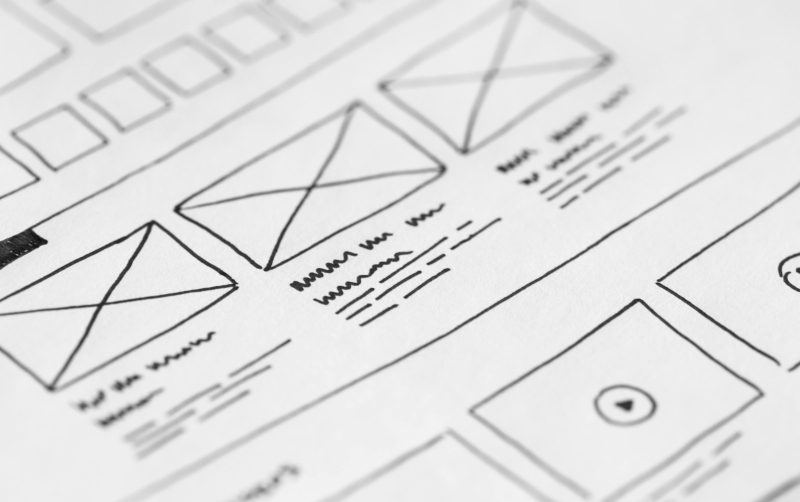UX Basics: How to Design for Usability and Functionality

Understanding UX Design Principles
Great UX design is about balancing usability (how easy something is to use) and functionality (how well it works).
- Simplicity: Simplify interactions and avoid overloading users with too many options.
- Consistency: Use familiar layouts and patterns to reduce learning curves.
- Accessibility: Ensure the design is usable by everyone, including those with disabilities.
At its core, UX design is user-centered, meaning the needs and preferences of your audience should guide every decision.
Conducting User Research
Identifying Target Audiences
Before designing, you need to understand who you’re designing for.
- Gather demographic data such as age, occupation, and technical proficiency.
- Create user personas to represent your audience segments. These personas help visualize their goals, frustrations, and preferences.
User Journey Mapping
Map out the steps users take when interacting with your product.
- Identify pain points where users may encounter confusion or delays.
- Highlight opportunities to streamline workflows and enhance satisfaction.
Research ensures your design aligns with real-world needs, not assumptions.
Designing for Usability
Keep It Simple (KISS Principle)
A simple design is easier to navigate and reduces cognitive load.
- Use whitespace effectively to highlight key elements.
- Avoid unnecessary features that don’t add value to the user.
Consistent Navigation and Layouts
Consistency builds trust and reduces user frustration.
- Stick to familiar design patterns for menus, buttons, and icons.
- Use the same style for layouts across different sections of your app or website.
Prioritizing Accessibility
Accessible design ensures that all users, including those with disabilities, can interact with your product.
- Follow WCAG standards for contrast ratios and readable fonts.
- Use tools like Axe or Lighthouse to test accessibility.
Designing for Functionality
Task Efficiency
Simplify key tasks to save users time and effort.
- Eliminate unnecessary steps in workflows.
- Offer shortcuts or auto-fill options for repetitive actions.
Responsive and Mobile-First Design
Design for smaller screens first, then scale up for desktops.
- Use flexible grids and scalable fonts to adapt to different devices.
- Ensure buttons and interactive elements are touch-friendly.
Error Prevention and Recovery
Mistakes happen—design for them.
- Provide clear error messages that guide users to solutions.
- Include undo options for accidental actions, such as deleting files.
Wireframing and Prototyping
Wireframes are blueprints that outline the structure and layout of your design.
- Use tools like Figma, Adobe XD, or Sketch to create wireframes.
- Develop prototypes to simulate interactions and gather feedback.
Prototyping allows you to test and refine your ideas before full development.
Conducting Usability Testing
Testing Early and Often
Testing your design during development helps catch issues before they reach users.
- Use A/B testing to compare different versions of your design.
- Analyze heatmaps to see where users click or hesitate.
Gathering Feedback
Tools like Hotjar or UsabilityHub let you collect user feedback.
- Incorporate insights from testing to improve navigation, content placement, and workflows.
Visual Design and Content Strategy
Visual Hierarchy
Guide users’ attention by prioritizing important elements.
- Use larger fonts for headlines and smaller text for details.
- Apply contrasting colors to highlight CTAs (Call-to-Actions).
Microcopy and Call-to-Actions (CTAs)
Well-written microcopy enhances usability.
- Use clear and actionable language for buttons (e.g., “Start Free Trial”).
- Avoid technical jargon that might confuse users.
Optimizing Performance and Speed
Fast-loading designs are critical for user retention.
- Compress images and minify scripts to reduce load times.
- Test your website’s performance using tools like Google PageSpeed Insights.
Creating Seamless User Flows
A seamless user flow ensures users can achieve their goals without confusion.
- Plan intuitive paths for navigation and task completion.
- Test your design by observing how users interact with it and adjusting accordingly.
Measuring Success with UX Metrics
Monitor the success of your UX design using these metrics:
- Task Completion Rate: The percentage of users completing tasks successfully.
- Time-on-Task: How long users take to finish specific actions.
- Error Rates: The frequency of mistakes users make.
Analyzing these metrics helps you identify strengths and areas for improvement.
Conclusion
Designing for usability and functionality is a delicate balance, but it’s essential for creating user-friendly digital experiences. By understanding your audience, simplifying interactions, and testing thoroughly, you can build products that delight users and meet business goals. Prioritize your users, iterate often, and stay committed to improving their experience.
FAQs
- What is the difference between usability and functionality in UX design?
Usability focuses on how easy the product is to use, while functionality ensures the product works effectively to meet user needs.
- How can I test the usability of my design?
You can conduct A/B testing, usability testing with real users, or analyze heatmaps to evaluate your design’s effectiveness.
- What tools are best for wireframing and prototyping?
Popular tools include Figma, Adobe XD, and Sketch.
- Why is accessibility important in UX design?
Accessibility ensures inclusivity, allowing people with disabilities to interact with your product.
- How often should I update my design based on user feedback?
You should continuously gather and implement user feedback, updating your design regularly to meet evolving needs.






